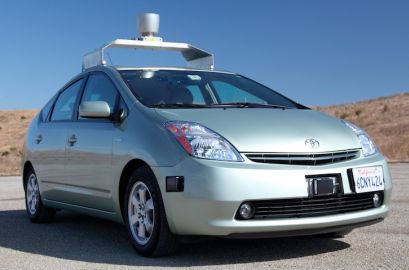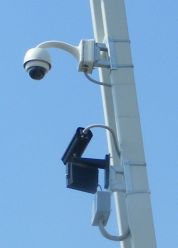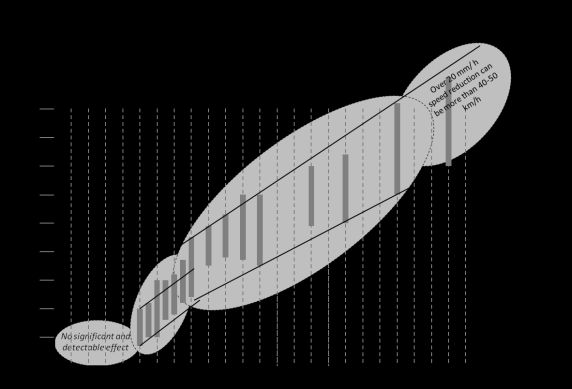 |
BMe Research Grant |

|
Gábor Baross Doctoral School of Transportation Sciences
Department of Transport Technology and Economics
Supervisor: Dr. Csaba CSISZÁR PhD.
Intelligent Transport Systems in everyday traffic
Introducing the research area
Intelligent Transport Systems (ITS) is the collective name for informatics and partially infrastructural solutions that are essential in today’s transportation. Their goals are to make the transportation system more user-friendly (increasing the travel comfort, decreasing the travel times, providing traffic information) and provide a safer transportation while decreasing the impact on environmental. (Short animation on ITS)
Brief introduction of the research place
Our Department currently includes 30 tutors. Besides education, we participate in national and European scientific research projects. Our two laboratories are equipped with state of the art traffic simulation software. Our partners include front-rank professional companies like State Motorway Management Co. or Közlekedés Consulting Engineers Ltd.
History and context of the research
The concept of ITS was introduced at the New York World Fair in 1939, at the “City of the future” stall of General Motors [1]. However, practical implementation has started only in the ‘70s, when the booming motorization in industrial countries caused frequent traffic jams, growing number of accidents etc.
Construction of new roads, bridges and multi-level junctions is excessively expensive and space-consuming, and often not at all possible within an urban environment. Intelligent Transport Systems help increasing the utilization of existing infrastructure elements, and allow for more users to use the same transport network, and at a higher service level.
Since the original highway applications proved to be effective, Intelligent Transport System is gradually spreading, nowadays forming an integral part of urban transport too, and being present in individual, public and freight transport as well.
Among others, ITS solutions include
-
Dynamic highway traffic control (video);
-
Real-time, on-demand control of urban traffic lights (video);
-
Electronic toll-collection systems (animation);
-
Fleet management and route planning system for freight vehicles (video)
-
Electronic ticket systems in public transport (video);
-
Real-time parking management (where fees may change due to current demands and free places, e. g. SFpark; parking information system);
-
Real-time inter- and multimodal journey planner and traffic information systems (TriMet Planner);
-
eCall: built-in automatic on-board emergency call system (operation and animation).
Technological progress constantly widens the circle of ITS solutions. Nowadays’ trending topic is the appearance of intelligent vehicles that are capable of taking over every single tasks of a driver and drives automatically without a driver [2], [3].

Figure 1. Google’s automatic car is the first driverless vehicle to enter road traffic
The research goal, open questions
Within the colourful world of Intelligent Transport Systems, my research focuses primarily on motorways. My PhD thesis has addressed the following questions:
-
How can we increase the efficiency and effectiveness of traffic flow (decrease of travel time and range of congestions, minimize the number of stops and starts, mitigate environmental impact) and improve road safety (reduce accidents and conflicts that led to them) by the help of ITS applications?
-
What kind of equipment and provisions can assure that drivers rely more on the transmitted information and also act according to the information (e.g. change their speed or route plan as advised)?
As a researcher at the BUTE, my goal is to develop the informatics background of the Hungarian transport system, which helps the integration into the common European systems. Moreover, my personal aim is to help Hungary (and especially BUTE) take part in the development of innovative, front-rank solutions. In this way, we can take a leading part in the research and professional area.
Methodology
Just like any other researchers, I need the underlying data, which are available in the databases of Hungarian road operators (State Motorway Management Co. and Hungarian Roads Management Co.) The data collection is conducted non-stop by many devices many of which are not visible to the drivers, e. g. CCTV cameras, in-pavement inductive-loop traffic detectors, weather stations. Data processing is supported by database management and data-mining software like Microsoft Access and SAS. My goal is to draw useful conclusions by data analysis and conclude to solutions that are useful to both the road operators and the drivers.

Figure 2. Motorway CCTV cameras can automatically detect atypical events even at night
Examination of national and international case studies and draw conclusion from them is an elemental part of my work. For this, I have to continuously monitor leading international journals and portals. Additionally to the literature review, surveying the national transport supply and demand, habits and the characteristics of the local market is also vital, because systems of developed countries cannot be copied completely as samples, but should be fitted to the local conditions.
Therefore, it is important to create close cooperation between the transportation companies, operators, and users. In this way, it can be assured that professional partners reckon researchers as the developers of useful and viable solutions, and not insular experts. For this purpose, I regularly participate at conferences and field trips, where I can get an insight into the everyday operation of these systems and I can familiarize with the latest developments. The assessment of specific needs can be done by personal consultations with experienced professionals and leaders or with the aid of interviews and on a wider scale, typically by questionnaires.
I have contracted a research agreement with the State Motorway Management Company that provide significant assistance during my entire research. In pursuing cooperation, they not only give free run of collected data but ensure continuous consultation, too.
Results
I have already published several articles both in English and in Hungarian during my career as a researcher and in the near future, my studies will be published in two foreign technical journals. I have participated several Hungarian and international front-rank conferences as a presenter, and in 2012 I managed to attend the ITS World Congress as well.
Below I present the results of three published studies:
1. Effects of rainfall on the motorway traffic parameters [S1]
In my study I have examined the effects of different precipitation intensities on the traffic speed at 5 cross-sections on the M3 and M7 motorway in Hungary. Based on the results, I could find a connection between the rainfall intensity and the average speed decrease in the slow and fast lane. Figure 3. presents the results for the fast lane. Under 5 mm/h rainfall intensity there is no significant impact. Over 5 mm/h intensity, the speed is reduced, depending on the intensity. The reduction is more pronounced in the fast lane than in the slow lane. 30-50 mm/h rainfall intensity indicates a critical rainfall level: at this intensity the traffic can stop. In such case, an accident is generally the main cause that triggers full stop.

Figure 3. Effect of rainfall intensity on the speed of fast lane
Similar
studies have not been completed in Hungary before. In my current research, I
examine the effects of the messages of variable message signs on
traffic parameters in case of adverse weather conditions (e.g. can displayed warning messages persuade drivers that they
drive safer).
2. Dynamic overtaking ban for heavy goods vehicles (HGV) on the Hungarian motorway network [S2]
Since 1st January 2011 vehicles over 7.5 tonnes must not overtake another HGV on two-lane motorway and expressway sections between 6AM and 10PM. Therefore, long “lorry walls” can evolve, which has and adverse effect on other participant of traffic (they can proceed at a slower pace, and may become nervous because of delays). I have examined the effects of a dynamic, real-time control which would replace the periodic static solution, and could provide information to the truck drivers via roadside variable message signs (Figure 3.).
It can be stated that such dynamic control solution can significantly reduce the delay. Currently, there are low traffic sections where the overtaking ban would not be necessary. There are sections where the dynamic control can reduce the 16 hours duration of the overtaking ban by at least by 1-2 hours even on the busiest sections.

Figure 3. Variable message signs are essential parts of real-time traffic control
3. On-line parking management system for trucks [S3]
Lack of information about the actual free capacity of parking facilities is a major problem for truck drivers in Hungary and even in Europe. Currently, they may not be able to start the mandatory rest period in time or they have to park their trucks irregularly. Taking into account the demands and the technical possibilities, I have created a certification system consisting of 5+1 levels. The highest level would be a common EU system. A control software would be integrated in the online journey planner software, enabling haulier companies to reserve parking places based on the actual traffic situation and occupancy, according their own demands. In case of congestions, the system would modify the reservations automatically. In this way, the system can ensure that drivers can spend the rest period at appropriate facilities under all circumstances.
There is a single display in Hungary (on the M1 motorway near Győr) that displays the free capacity of the following facility. Thus it stuck at the first level of the system, but even state-of-the-art Western-European solutions do not reach the highest level. This paper provides detailed guidance for the design of a common European system, which will be hopefully implemented in coming years.

Figure 4. Real-time roadside information provision about the free capacity of the following parking facilities
Expected impact and further research
As a PhD. student it is important to me that we can teach modern and up to date curriculum and can provide engineers with broad practical information, beyond detailed theoretical knowledge.
The goal of the world’s transportation experts, including our department and me is that in tomorrow's cities and motorways the transportation be more energy-efficient, safe and user-friendly. This road leads through real-time traffic management solutions, therefore, I would like to participate as effectively as I can in the design and implementation of these systems. It comes with significant responsibility, as transportation and its quality affects almost everyone on a daily basis.
Visions about the future of transport: Transport in 2030 and intelligent travelling.
Publications, references, links
Publications (Click the link to download them):
[S1] Zsolt Sándor, Effects of rainfall on the motorway traffic parameters. Acta Technica, 2013 (under publishing, expected issue 08/2013)
[S2] Zs. Sándor; E. Nagy, Overtaking ban for heavy goods vehicle in Hungary on the national motorway network. Pollack Periodica, Volume 7, Number 1/April 2012
[S3] Zs. Sándor; E. Nagy, Intelligent Truck Parking on the Hungarian Motorway Network, Pollack Periodica, Volume 7, Number 2/August 2012
Other publications:
[S4] Zs. Sándor; Dr. Cs. Csiszár, Development stages of intelligent parking information systems for trucks. Acta Polytechnica Hungarica, 2013 (under publishing)
[S5] Zs. Sándor; Dr. Cs. Csiszár, Role of Integrated Parking Information System in Traffic Management. International Journal for Traffic and Transport Engineering, 2013 (under publishing)
[S6] Zs. Sándor; Dr. Cs. Csiszár, Integration of Parking Information Systems into Traffic Management. European Platform of Transport Sciences (EPTS): X. European Transport Congress in Budapest, 8-9 November 2012, Budapest, Hungary, ISBN: 978-615-5298-00-4 pp. 93-99.
Links
Videos, animations
Short animation on intelligent transportation systems
Video about dynamic traffic management of motorways
Animation on electronic toll-collection systems
Fleet management and route planning system for freight vehicles
Electronic ticket systems in public transport
TriMet Planner - Real-time inter- and multimodal journey planner and traffic information systems
eCall: built-in automatic on-board emergency call system operation and animation
Articles and presentations
Intelligent transportation systems - Wikipedia
Intelligent traffic prediction
IBM traffic management strategy
Intelligent transport, How cities can improve mobility
The Case for Smarter Transportation
Homepages
Hungarian Roads Management Co.
Real-time parking management in San Francisco
Közlekedés Consulting Engineers Ltd.
European Commission Directorate General for Mobility and Transport
References:
[1] Billy Williams, (2004), INTELLIGENT TRANSPORTATION SYSTEMS, in Sustainable Built Environment, [Eds. Fariborz Haghighat, and Jong-Jin Kim], in Encyclopedia of Life Support Systems (EOLSS), Developed under the Auspices of the UNESCO, Eolss Publishers, Oxford ,UK, [http://www.eolss.net] [Retrieved January 31, 2013]
[2] http://www.bloomberg.com/news/2013-05-30/google-s-self-driving -cars-get-boost-from-u-s-agency.html
[3] http://en.wikipedia.org/wiki/Google_driverless_car
